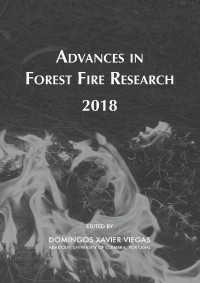Please use this identifier to cite or link to this item:
https://hdl.handle.net/10316.2/44627| DC Field | Value | Language |
|---|---|---|
| dc.contributor.author | Noonan-Wright, Erin | |
| dc.contributor.author | Seielstad, Carl | |
| dc.date.accessioned | 2018-11-10T18:40:01Z | |
| dc.date.accessioned | 2020-09-05T02:04:28Z | - |
| dc.date.available | 2018-11-10T18:40:01Z | |
| dc.date.available | 2020-09-05T02:04:28Z | - |
| dc.date.issued | 2018 | - |
| dc.identifier.isbn | 978-989-26-16-506 (PDF) | |
| dc.identifier.uri | https://hdl.handle.net/10316.2/44627 | - |
| dc.description.abstract | Discussion of risk permeates every U.S. federal wildland fire agency directive before, during and after fire season. In this study, we explore patterns of wildfire risk across the U.S. from the systematic operational risk assessments conducted by land managers on 5,087 wildfire incidents from 2010 - 2017. The Relative Risk Assessment (RRA) is a systematic, semi-quantitative assessment of risk which integrates ratings of high, moderate, and low ‘Values’, ‘Hazard’, and ‘Probability’ for each wildland fire. Each entry also includes notes, where decision makers describe qualitatively their reasons for their rating. The RRA is a mandated component of the Wildland Fire Decision Support System – WFDSS, decision making system for U.S. federal wildland fires. We know that perceptions of risk are different in geographic areas of the United States. The Southwest region perceives low risk while the Northwest perceives high risk more frequently when compared to the U.S. as a whole. The reasons for differences in risk perceptions are complex, but previous analysis of the relative risk data suggest the Southwest has a greater frequency of low ratings for Values in comparison to the Northwest. Other geographic areas follow similar trends. Here, we strive to define the attributes of the RRA that are most prevalent for high versus low risk fires by evaluating qualitative content associated with the RRA. “Private” values in the Northwest are documented with greater frequency for the Values element compared to the Southwest, where “cultural” values occur with greater frequency. Qualitative analysis illuminated specific geographic trends previously analyzed quantitatively. As we strive to make a better connection between perceived and actual risk, we hope the results of this analysis demonstrates that there are components of perceived risk that should be addressed with greater emphasis before and during wildland fire planning efforts. | eng |
| dc.language.iso | eng | - |
| dc.publisher | Imprensa da Universidade de Coimbra | por |
| dc.relation.ispartof | http://hdl.handle.net/10316.2/44517 | por |
| dc.rights | open access | - |
| dc.subject | wildland fire | eng |
| dc.subject | United States | eng |
| dc.subject | WFDSS | eng |
| dc.subject | risk | eng |
| dc.title | Factors contributing to high and low risk fires in the United States: an analysis of the relative risk assessment | por |
| dc.type | bookPart | por |
| uc.publication.firstPage | 1002 | - |
| uc.publication.lastPage | 1008 | - |
| uc.publication.location | Coimbra | por |
| dc.identifier.doi | 10.14195/978-989-26-16-506_110 | - |
| uc.publication.section | Chapter 5 - Decision Support Systems and Tools | por |
| uc.publication.digCollection | PB | por |
| uc.publication.orderno | 110 | - |
| uc.publication.area | Ciências da Engenharia e Tecnologias | por |
| uc.publication.bookTitle | Advances in forest fire research 2018 | - |
| uc.publication.manifest | https://dl.uc.pt/json/iiif/10316.2/44627/200936/manifest?manifest=/json/iiif/10316.2/44627/200936/manifest | - |
| uc.publication.thumbnail | https://dl.uc.pt/retrieve/11016415 | - |
| uc.publication.parentItemId | 55072 | - |
| uc.itemId | 68191 | - |
| item.grantfulltext | open | - |
| item.fulltext | With Fulltext | - |
| Appears in Collections: | Advances in forest fire research 2018 | |
Files in This Item:
| File | Description | Size | Format | |
|---|---|---|---|---|
| factors_contributing_to_high_and_low_risk.pdf | 1.02 MB | Adobe PDF |  |
Items in DSpace are protected by copyright, with all rights reserved, unless otherwise indicated.
